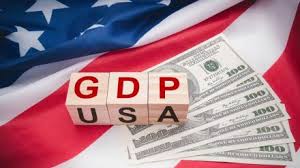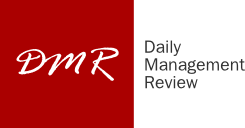
The U.S. economy’s second-quarter growth picture brightened in the Commerce Department’s second estimate, which raised real GDP to a 3.3% annualized pace from an initial 3.0% reading. The upward revision reflected a mix of stronger business investment — notably in intellectual property tied to artificial intelligence and software — higher equipment spending, an upward tweak to consumer outlays and a technical rebound driven by volatile import flows that followed tariff-driven front-loading earlier this year. Policymakers and market observers say the headline upgrade understates important fragilities: much of the boost was concentrated in a handful of investment categories and in trade timing effects whose persistence is doubtful.
Investment surge and AI-driven capital deepening
The largest single mechanical contributor to the revision was a much bigger estimate of business investment in intellectual property products. The BEA’s second estimate raised growth in that category sharply — a change that analysts attribute in part to accelerated corporate spending on software, AI development and data-related capital. Equipment investment was also revised higher, reflecting stronger outlays for machinery and tech hardware that businesses say support automation and AI deployments. Together these moves lifted measures of underlying domestic demand and helped offset weaker public spending and other drags.
Economists note several channels through which AI-related spending can boost measured GDP. Capitalised software and R\&D count as investment rather than current consumption, so a wave of corporate projects shows up as stronger investment growth even if the eventual productivity gains materialize only over several years. Corporates are also increasingly buying servers, chips and specialised equipment to run AI workloads — items recorded as equipment investment — magnifying the short-term statistical effect. But forecasters caution that much AI spending is front-loaded: proof-of-concept builds, datacentre upgrades and pilot deployments raise near-term investment without guaranteeing immediate, economy-wide productivity gains.
Trade timing, tariffs and inventory swings
A second critical driver of the revision was swings in imports that flowed from the staggered imposition of broad tariffs earlier in the year. Businesses rushed to import goods ahead of tariff implementation in the first quarter, temporarily depressing measured GDP, and then sharply reduced import volumes in the second quarter — a mechanical change that raised headline GDP when imports fell. That “front-loading” and subsequent ebb produced a statistical bounce; it does not necessarily reflect a durable strengthening of domestic demand.
Tariff policies have also altered firm behaviour in ways that complicate short-term readings. Some importers accelerated shipments, others shifted sourcing and inventory strategies, and a subset of firms reported tariff-driven costs that compress margins and could restrain investment later. Analysts warn that as these timing effects wash out over coming quarters, the headline growth rate could lose a meaningful portion of its artificial lift and revert toward the slower trend implied by weaker hiring and elevated borrowing costs.
Consumer spending was revised up modestly, contributing to the stronger headline. Households showed firmer services outlays and some resilience in goods purchases after the first-quarter disruption. At the same time, corporate profits rebounded in the quarter, buoyed by the mix of higher sales, inventory adjustments and the investment composition. Profit margins remained resilient on average, a dynamic that underpins continued capital spending even in the face of higher input costs from tariffs. But profitability strength can mask underlying strains: tariffs raise costs for manufacturers and retailers, and several large firms have already signalled significant tariff-related hits to earnings.
How sustainable are the drivers of the revision?
The persistence of the forces that lifted Q2 depends on three core questions: whether AI and software investment continues at pace and translates into broad productivity gains; whether the trade and inventory distortions unwind without triggering weaker demand; and whether labour-market slack and interest-rate settings permit sustained expansion.
First, AI and related capital deepening can deliver durable productivity improvements, but the timing and breadth of those gains are uncertain. Large firms and data-intensive sectors may reap early benefits, while smaller companies and labor-heavy services see limited immediate uplift. Moreover, much of the current investment appears concentrated in a finite set of projects; unless spending broadens across industries, aggregate productivity and wage gains may be modest relative to the headline investment figures.
Second, the tariff-driven import cycle was largely mechanical. As import volumes normalize and firms exhaust pre-tariff inventories, the GDP boost tied to the timing effect is likely to fade. If tariffs continue to bite — raising costs and inducing supply-chain reallocations — they could depress real activity in coming quarters, offsetting any sustained lift from AI investment. Economists therefore caution that the Q2 revision may overstate the economy’s momentum, forecasting slower growth in the second half of the year.
Third, the labour market and monetary policy backdrop will determine whether investment converts into hiring and consumption. The Fed has kept rates elevated, and officials have signalled caution on cuts amid mixed signals on inflation and employment. If businesses find it difficult to convert capital spending into broad hiring — because of automation, skill mismatches or tighter labour supply — the investment surge may not translate into persistent consumption growth. Declining hiring rates and modest gains in payrolls would erode the demand base that underpins a durable expansion.
Policymakers face a trade-off. Short-term support from investment and trade technicalities reduces immediate pressure on central banks to act, but relying on episodic or concentrated spending risks complacency. If AI investment continues and diffuses across firms, it could justify a more optimistic medium-term outlook; if not, the economy may slow toward trend growth as tariff effects fade and higher rates weigh on activity. Fiscal policymakers may also face calls to support workforce retraining and infrastructure that amplifies the productivity benefits of tech investment.
Bottom line: the Q2 upgrade reflects a real, but uneven, mix of stronger corporate investment and a temporary trade rebound. Disentangling which elements will persist requires watching capex pipelines, import and inventory patterns, profit margins and labour-market dynamics in the months ahead. If AI-led capital deepening broadens and tariffs stabilize, the revision may presage a meaningful step up in potential growth; if not, the higher reading will look more like a transitory statistical recovery than the start of a sustained acceleration.
(Source:www.reuters.com)
Investment surge and AI-driven capital deepening
The largest single mechanical contributor to the revision was a much bigger estimate of business investment in intellectual property products. The BEA’s second estimate raised growth in that category sharply — a change that analysts attribute in part to accelerated corporate spending on software, AI development and data-related capital. Equipment investment was also revised higher, reflecting stronger outlays for machinery and tech hardware that businesses say support automation and AI deployments. Together these moves lifted measures of underlying domestic demand and helped offset weaker public spending and other drags.
Economists note several channels through which AI-related spending can boost measured GDP. Capitalised software and R\&D count as investment rather than current consumption, so a wave of corporate projects shows up as stronger investment growth even if the eventual productivity gains materialize only over several years. Corporates are also increasingly buying servers, chips and specialised equipment to run AI workloads — items recorded as equipment investment — magnifying the short-term statistical effect. But forecasters caution that much AI spending is front-loaded: proof-of-concept builds, datacentre upgrades and pilot deployments raise near-term investment without guaranteeing immediate, economy-wide productivity gains.
Trade timing, tariffs and inventory swings
A second critical driver of the revision was swings in imports that flowed from the staggered imposition of broad tariffs earlier in the year. Businesses rushed to import goods ahead of tariff implementation in the first quarter, temporarily depressing measured GDP, and then sharply reduced import volumes in the second quarter — a mechanical change that raised headline GDP when imports fell. That “front-loading” and subsequent ebb produced a statistical bounce; it does not necessarily reflect a durable strengthening of domestic demand.
Tariff policies have also altered firm behaviour in ways that complicate short-term readings. Some importers accelerated shipments, others shifted sourcing and inventory strategies, and a subset of firms reported tariff-driven costs that compress margins and could restrain investment later. Analysts warn that as these timing effects wash out over coming quarters, the headline growth rate could lose a meaningful portion of its artificial lift and revert toward the slower trend implied by weaker hiring and elevated borrowing costs.
Consumer spending was revised up modestly, contributing to the stronger headline. Households showed firmer services outlays and some resilience in goods purchases after the first-quarter disruption. At the same time, corporate profits rebounded in the quarter, buoyed by the mix of higher sales, inventory adjustments and the investment composition. Profit margins remained resilient on average, a dynamic that underpins continued capital spending even in the face of higher input costs from tariffs. But profitability strength can mask underlying strains: tariffs raise costs for manufacturers and retailers, and several large firms have already signalled significant tariff-related hits to earnings.
How sustainable are the drivers of the revision?
The persistence of the forces that lifted Q2 depends on three core questions: whether AI and software investment continues at pace and translates into broad productivity gains; whether the trade and inventory distortions unwind without triggering weaker demand; and whether labour-market slack and interest-rate settings permit sustained expansion.
First, AI and related capital deepening can deliver durable productivity improvements, but the timing and breadth of those gains are uncertain. Large firms and data-intensive sectors may reap early benefits, while smaller companies and labor-heavy services see limited immediate uplift. Moreover, much of the current investment appears concentrated in a finite set of projects; unless spending broadens across industries, aggregate productivity and wage gains may be modest relative to the headline investment figures.
Second, the tariff-driven import cycle was largely mechanical. As import volumes normalize and firms exhaust pre-tariff inventories, the GDP boost tied to the timing effect is likely to fade. If tariffs continue to bite — raising costs and inducing supply-chain reallocations — they could depress real activity in coming quarters, offsetting any sustained lift from AI investment. Economists therefore caution that the Q2 revision may overstate the economy’s momentum, forecasting slower growth in the second half of the year.
Third, the labour market and monetary policy backdrop will determine whether investment converts into hiring and consumption. The Fed has kept rates elevated, and officials have signalled caution on cuts amid mixed signals on inflation and employment. If businesses find it difficult to convert capital spending into broad hiring — because of automation, skill mismatches or tighter labour supply — the investment surge may not translate into persistent consumption growth. Declining hiring rates and modest gains in payrolls would erode the demand base that underpins a durable expansion.
Policymakers face a trade-off. Short-term support from investment and trade technicalities reduces immediate pressure on central banks to act, but relying on episodic or concentrated spending risks complacency. If AI investment continues and diffuses across firms, it could justify a more optimistic medium-term outlook; if not, the economy may slow toward trend growth as tariff effects fade and higher rates weigh on activity. Fiscal policymakers may also face calls to support workforce retraining and infrastructure that amplifies the productivity benefits of tech investment.
Bottom line: the Q2 upgrade reflects a real, but uneven, mix of stronger corporate investment and a temporary trade rebound. Disentangling which elements will persist requires watching capex pipelines, import and inventory patterns, profit margins and labour-market dynamics in the months ahead. If AI-led capital deepening broadens and tariffs stabilize, the revision may presage a meaningful step up in potential growth; if not, the higher reading will look more like a transitory statistical recovery than the start of a sustained acceleration.
(Source:www.reuters.com)





